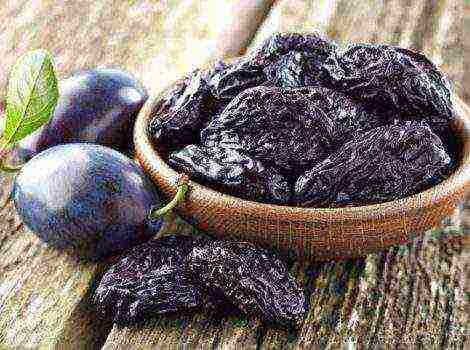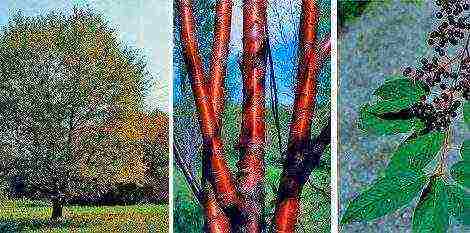Content
Correct planting and caring for cherries Bovine heart
This garden tree can be found today in almost every household plot. Sweet cherries are popular for their sweet and delicious berries. It is only natural that any gardener wants to grow only the best crops, and cherries are no exception. In the article, we will talk about the large-fruited variety Bull's Heart and give its characteristics.
Description of the cherry variety Bull heart
The number of fans of this culture is increasing every year. Gardeners of the southern regions and gardeners of central Russia want to grow it. Everyone strives to get the sweet fruits of this variety, which is considered the largest among the others, bred by specialists in domestic breeding.
Back in the days of the Soviet Union, this sweet cherry variety was recommended for cultivation in Georgia, Azerbaijan, and the south of the country. And today the boundaries of its cultivation expanded significantly... Even gardeners of the Black Earth Region and the central regions of the country receive good harvests.
Like other varieties, the plant at the initial stage shows good growth, by the age of five it turns, according to the description, into a strong tree with a crown of medium thickening. Then the annual growth decreases, the tree reaches a height of three to five meters.
The degree of branching is low, the foliage covers the shoots sparsely. This allows the crown to be well ventilated.
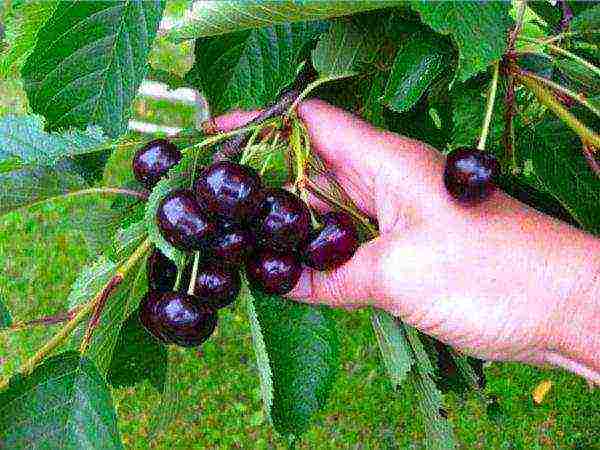
Cherry foliage is distinguished by the following features:
- saturated green tint;
- wide lanceolate shapes, pointed tips, rounded bases, ending in a strong handle;
- double-serrated edges of the plates.
The appearance of foliage occurs almost simultaneously with the opening of inflorescences, and this period falls in mid-May. Most flower buds are laid on short bouquet branches. Flowers are collected in two - four pieces.
Cherry variety matures gradually... It all depends on climatic conditions and weather. Most often, the first harvests can be obtained late June - early July.
Fruit characteristics
The berries are large, weigh from 7 to 10 grams each one. Outwardly, they look attractive, the skin is dark, almost black, the pulp is juicy, red in color.
Fruits are even, kept on short stalks. If the crop is harvested gradually, then ripe berries calmly hang on the branches for another month, almost without changing their quality.
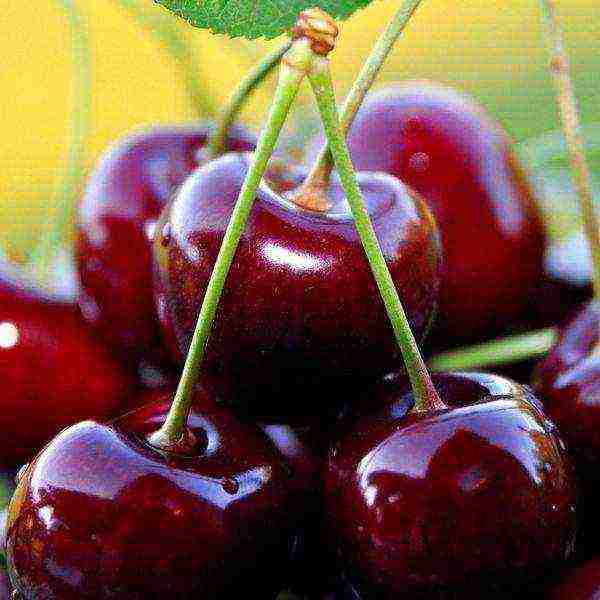
Berries are used fresh, canned... The sugar and acid content in them depends on the weather conditions and the care provided for the tree.
Advantages and disadvantages of the variety
the obvious advantages include the following features:
- cherries perfectly tolerates winter cold;
- variety possesses good yield;
- the tree is able to resist fungal diseases;
- excellent taste of berries.
But culture has its drawbacks:
- the taste of berries depends on the weather;
- the crop is poorly transported, it is not stored for long.
Planting and leaving
Since cherries tolerate severe frosts well, they can be planted not only in spring, but also in autumn.But gardeners recommend doing this after winter, so that the tree has time to take root well in a new place.
When choosing a place for planting, it is necessary to take into account that the plant needs a lot of heat and sunlight... Best suited for this is the southern side of the site, well protected from drafts.
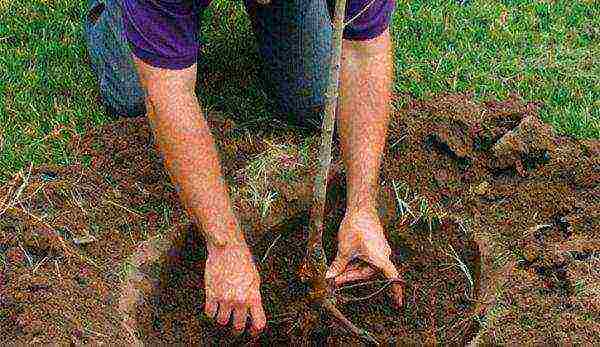
The soil composition must be different good fertility and moisture permeability... Groundwater should be located at a depth of more than one and a half meters from the surface of the earth. It is best if the land is loamy or sandy loam. Swampy areas are not suitable for planting seedlings.
Landing is carried out with an interval of 3-3.5 meters... The spacing between rows should be not less than five meters.
It is recommended to bury the seedling gradually, shaking it periodically so that the soil fills well the voids between the roots. The root collar should remain on the surface. A garter stake is installed at the same time as landing.
Everything ends with watering, for which it is used at least three buckets of water... The trunk circle is mulched with humus or peat.
Growing conditions
The tree loves moisture, so watering should be abundant, but not frequent - once a month... It is necessary to take into account the weather conditions and monitor the condition of the soil. Up to three buckets are poured under a young tree, but twice as many under an adult cherry. The procedure is performed from the moment the foliage appears until it completely falls off.
In the first year of growth, the tree does not need additional feeding. But then you will need to make fertilizers containing nitrogen. It is allowed to feed with organic compounds in the form of rotted manure diluted with water.
Mineral compositions are suitable superphosphates and saltpeter... They are introduced periodically, in small quantities. If the acidity of the soil is high, it can be reduced with lime.
Features of this variety
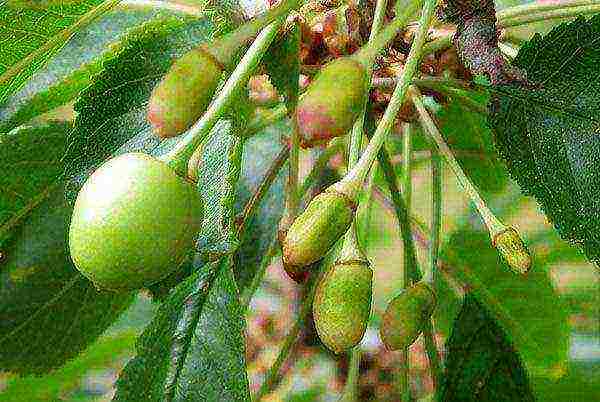
The tree requires almost no care, but certain rules must be observed:
- plant light-loving, there should be no other trees near it;
- the seedling must have a strong, well-branched root system;
- basic growing conditions - watering and soil conditions.
Diseases and pests
In addition, it perfectly protects against frost. Some gardeners scatter poison near the tree, wrap the trunk with roofing material.
With the onset of spring, until the tree begins to bloom, it should treat with copper sulfate, urea or chemical composition "30"... The same procedure must be carried out when the flowering is completely completed. These measures will help keep the tree from diseases and attacks of harmful parasites.
The plant is popular, unpretentious, does not need special care. The tree always yields tasty yields if you pay a little attention to it and, if necessary, plant pollinators nearby.
